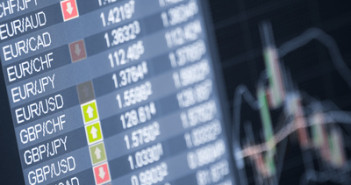A mixed bag of economic data yesterday was enough to lift stocks higher, although the gains merely offset the drop that was seen on Monday as equity price action unfolded in a consolidative fashion. New Home Sales out of the US continue to print on the soggy side of expectations, as less than optimal weather conditions keep new home buyers from house hunting en masse. That being said, although weather is a consideration that has just materialized recently, when looking at the purchases of new homes on a longer-time frame there has only been a moderate steepening of trend since the large slide initiated prior to 2008, so one should be cautious about expecting a massive rebound as soon as the snow melts out east. Mitigating some of the negative sentiment on the housing data was the fact that consumer confidence for March came in hotter than anticipated, with the survey printing at highs not seen since January of 2008. The S&P managed to recoup the majority of Monday’s losses and gained back 0.44% while cash-VIX fell over 1 vol to close just above 14.0%.
The EUR experienced a strong offer tone throughout the majority of the North American session, with traders hitting the sell-button after a number of ECB board members gave speeches with dovish undertones. Mario Draghi reiterated that the EUR was key to price stability and that the ECB stands ready to take additional measures to maintain this stability, and while this is nothing new from the ECB head, EURUSD sank into the high 1.37s before the pair erased those losses on a bout of profit-taking heading into the close of North America.
Speaking of central bank heads, Reserve Bank of Australia Governor Glenn Stevens was on the wires overnight, giving an address that sent the Aussie rallying on some slightly more hawkish comments about the Australian economy. Stevens said that there are encouraging early signs of a rebalancing from resource-focused growth to domestic consumption, and that the lower AUD compared to last year will help bolster the economy. AUDUSD generated some hefty bids overnight as traders digested the words of the RBA Governor, sending the pair above the 0.92 handle, up close to a full big figure.
With money flowing into the Aussie this morning, the corresponding movement is money flowing out of the Chinese economy, with investors skittish after yesterday’s reports of a localised bank run. Although the PBoC has assured depositors that their funds would be safe, the realization that recent talk of a government stimulus might not materialize has also weighed on market confidence, with participants questioning how strong the underlying economy is as housing construction and prices slow. The Shanghai Comp managed to only register a loss of -0.18%, while the Yuan bucked its recent strengthening trend as USDCNY increased back above 6.20.
Turning to the European session, newswires were fairly quiet overnight, although the EUR is marginally weaker against the USD and CAD as markets continue to position for a more dovish European Central Bank at its upcoming meetings. Price action this morning suggest market participants are unwilling to get long ahead of the important data due out this evening, and cautious about getting overly bullish before the ECB meeting next week. European stocks are well situated in the green as optimism of a helping hand from the ECB buoys sentiment, while the EUR continues to pivot around the 1.38 handle against the USD.
Heading into the North American open, durable goods orders for the month of February were just released, and showed that companies weren’t necessarily ramping up their capital spending, paring some of the strength seen last month in January. The headline reading came in with a 2.2% increase from the prior month, but most of the strength was due to higher bookings of aircraft and autos, as the non-defense, ex-air category of durable goods slid by 1.3% on expectations of a 0.7% increase. S&P futures ticked slightly lower after the report hit the wires, but still remain well supported ahead of the opening bell, telegraphing a positive start to the day for equities. The Loonie is stronger against the USD this morning as cross flows from the commodity-bloc boost the CADs appeal, however USDCAD ran into support overnight in the low 1.11s, and will be a key short-term technical level for the pair moving forward. Should USDCAD fall through the overnight lows that were seen, room opens up for the pair to retrace the entirety of last week’s move back into the mid-1.10s.
Preparing for what is on the economic calendar tomorrow, some important data is set to be released for the Eurozone overnight. Both M3 Money Supply and Private Loan growth for February are set to be released, with expectations that there will only be a slight improvement for both readings; money supply is forecast to have grown by 1.3% on an annualized basis, while private loan growth is estimated to have shrunk by 2.1% over the last twelve months. Should these numbers print lower than analysts have forecast, this will increase the pressure on the ECB to look at introducing additional monetary policy measures to boost consumer prices and economic growth, confirming Draghi’s recent concerns on price stability and the ECB’s commitment to foster this.
Also on the docket, Pending Home Sales for February in the US are set to be released, likely to remain flat in terms of growth from January. A flat print wouldn’t be the worst thing considering the overall softness in the housing industry as of late, but if we see a release that is in line with new home sales that were released yesterday, it is likely we see the USD come under a bit of pressure. It is very likely that because of the new home sales number on Tuesday markets are expecting tomorrow’s data to be on the softer side of expectations, so there is the potential to see some short-covering in the USD if pending sales shows some unexpected strength.
Further reading:
durable goods
consumer confidence



